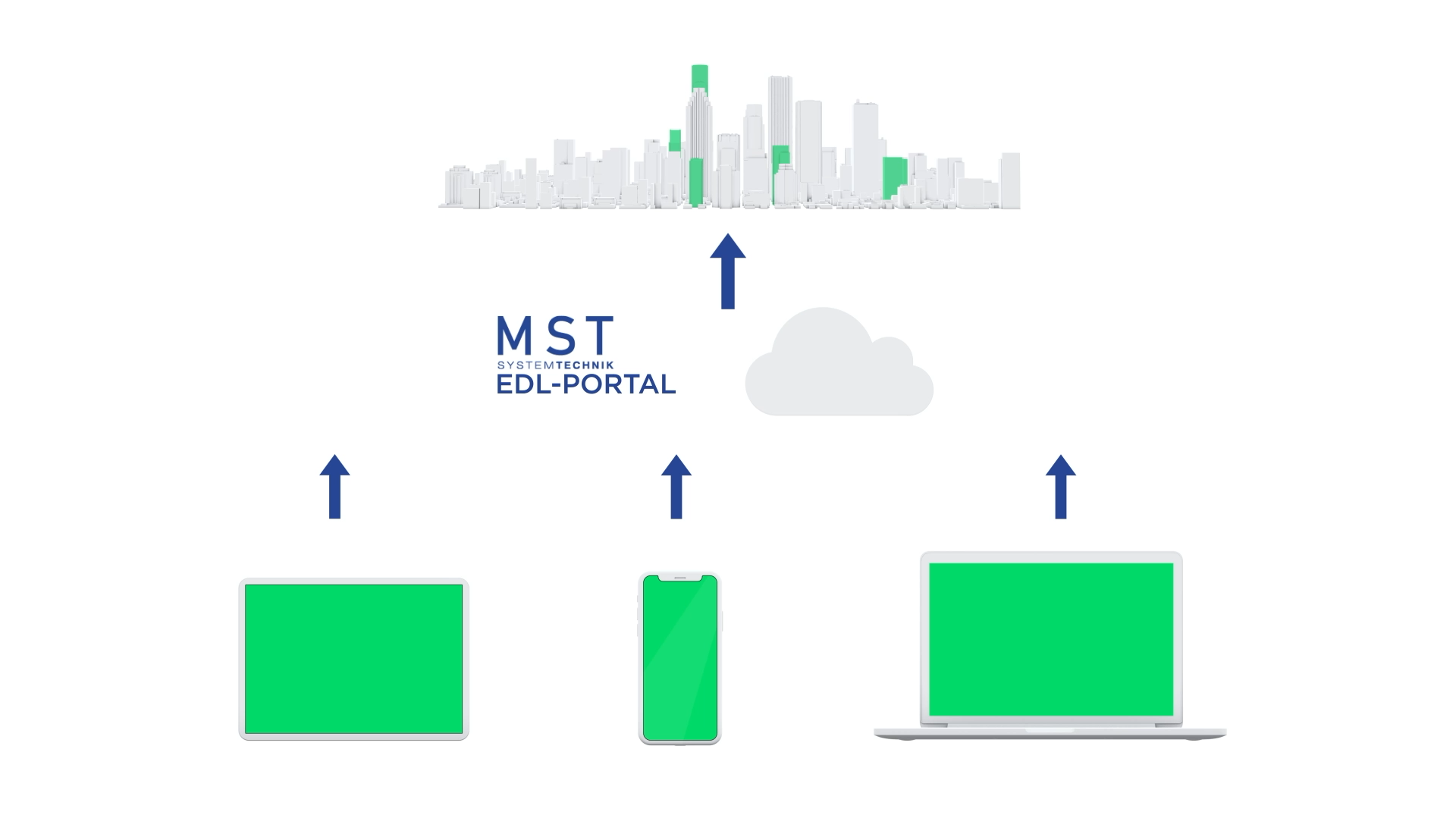
Hardware for data acquisition
The data acquisition hardware, also known as the EDL box, is a central component of the EDL portal that enables data from various sensors and systems to be acquired, processed and transferred to the portal
1. Meaning of the EDL box
The EDL-Box plays a crucial role in recording and transmitting data from building services systems to the EDL portal. It enables continuous monitoring and analysis of operating parameters such as temperature, humidity, power consumption and other important key figures, which leads to more efficient operational management and energy optimization.
2. Main components of the EDL-Box
2.1. Sensor interfaces
- The EDL box is equipped with various interfaces for connecting analog and digital sensors and recording data from them.
- This includes interfaces such as analog inputs, digital inputs, Modbus interfaces and other protocols for communication with sensors and measuring devices.
2.2. Data processing and storage
- The EDL box has a powerful processor unit and memory to process, store and transfer data to the EDL portal.
- It can filter, aggregate and analyze raw data to extract relevant information and generate reports.
2.3. Communication interfaces
- To transfer data to the EDL portal, the EDL box is equipped with various communication interfaces, including Ethernet, WLAN, 4G (5G in preparation) or other wireless technologies.
- It enables reliable and secure data transmission via various networks and protocols.
2.4. Robust housing and environmental sensors
- The EDL box is housed in a robust casing that protects it from external influences such as moisture, dust and vibrations.
- It also has environmental sensors to monitor and log ambient conditions such as temperature and humidity (MCS).
3. Functions of the EDL box in the EDL portal
3.1. Data acquisition and processing
- Acquisition of data from various sensors and systems in real time. Data can also be collected via communication connections (Modbus TCP/RTU/ASCII, OPC UA, KNX, PLC handler (Codesys), M-Bus, SNMP, MQTT, etc.).
- Processing and filtering of raw data to extract relevant information and key figures.
3.2. Data transmission and connectivity
- Reliable transmission of data to the EDL portal via various communication channels.
- Support for wireless technologies such as WLAN or 4G for use in different environments.
3.3. Remote monitoring and control
- Remote monitoring and control of installations and systems via the EDL portal.
- Option for remote configuration and diagnosis of the EDL-Box via a secure VPN connection.
3.4. Security and data protection
- Implementation of security mechanisms such as encryption and authentication to ensure the integrity and confidentiality of the transmitted data.
- Compliance with data protection regulations and guidelines to protect the privacy of users.
4. Advantages of the EDL box in the EDL portal
4.1. Scalability and flexibility
- The EDL-Box is scalable and can be adapted to the requirements of different applications and environments.
- It enables the simple integration of new sensors and systems as well as the expansion of the system if required.
4.2. Real-time monitoring and analysis
- By continuously recording and transmitting data, the EDL-Box enables real-time monitoring and analysis of system performance data.
- Users receive immediate insight into the operating status of their systems and can react quickly if necessary.
4.3. Cost savings and increased efficiency
- The EDL-Box helps to reduce costs and increase efficiency by enabling precise monitoring and control of technical building systems.
- By identifying optimization potential and implementing more efficient operating strategies, operators can reduce their operating costs.
4.4. Improved maintenance and diagnostics
- The remote monitoring and control functions of the EDL-Box facilitate the maintenance and diagnosis of systems by enabling remote access to operating data and diagnostic information.
- Technicians can identify and rectify problems more quickly, which reduces downtime and increases operational reliability.
Conclusion
Overall, the EDL-Box is an essential component of the EDL-Portal, which enables reliable data acquisition and transmission and thus forms the basis for efficient operational management and energy optimization. Thanks to its many functions and advantages, it makes a significant contribution to improving building performance and sustainable operational management.

